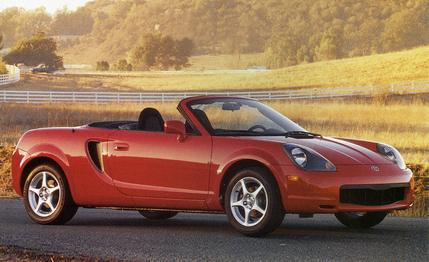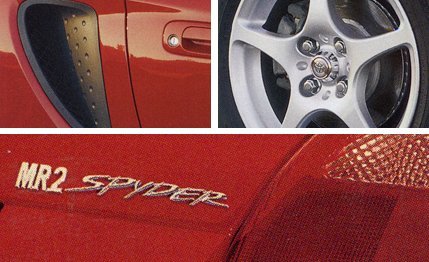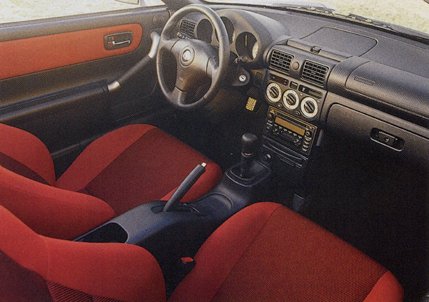
 First Drive Review
First Drive Review
There are some very good reasons for building a mid-engined sports car. By situating all the heavy bits amidships, you reduce inertia at the car's nose and tail, making it a lot easier for the car to change direction. That's what produces the responsive and nimble handling characteristics typical of mid-engined cars.
Unfortunately, it's also responsible for some notably spooky handling at the limit from some examples of the genre. Highly responsive vehicles occasionally verge into outright instability. And having had that accusation hurled at earlier MR2s, Toyota took no chances with the new Spyder. At no time during our first stint behind the wheel did the car ever display anything other than progressive understeer in corners, and it tracked as straight as a laser at triple-digit velocities with genuine hands-off-the-wheel balance.
The new MR2 Spyder is so confidence inspiring that it might almost be the reason Toyota chose the mid-engine format. You know, to prove once and for all that it can be done with none of the quirks found in other examples of the type. Certainly, there are numerous reasons why Toyota might have moved away from the concept with its new Miata fighter.


First, the layout does not facilitate much luggage space. In fact, the MR2 Spyder -- having to accommodate space for a folding top -- is worse than the old MR2 coupes in this regard, offering only a couple of shallow compartments behind the seats (the suspension, the radiators, and the spare tire fill the front compartment).
Dropping the engine immediately behind the occupants puts it, and the energetic noises of its exertions, mere inches away from their ears. With the top up and the tachometer a-winding, there's ample aural evidence broadcast into the cabin of multivalve four-cylinder activities.
Those, in a nutshell, are the up- and downsides of the argument about the MR2 Spyder, but there is no doubt that Toyota's execution of the concept was approached with its usual systematic diligence. Chief engineer Harunori Shiratori remarked that the resurgence of the sports car, particularly the roadster, is well under way, but that the trend to overweight, overpriced examples has to be avoided, as they were the primary contributors to the demise of the segment in the recent past.
Also, since Toyota is on a crusade to drive its owner demographics toward younger customers, the price and the styling had to be in line with their resources. As part of a three-pronged initiative to lure younger buyers (co-starring the Echo and the Celica), the MR2 Spyder was masterminded by Toyota's youth-oriented "genesis group."


According to Toyota officials, the MR2 Spyder will be available in restricted numbers -- about 5000 a year in the U.S. This sounds like more of the paradoxical reasoning we considered for the adoption of the mid-engine layout. A low-priced, small-volume product flies in the face of common-sense economics. And then Toyota's managers mention the 40,000 existing MR2 owners and the many MR2 owners' clubs and Web sites already extant. None of which, surely, encompasses the NetGen target market. But hey, they know what they're doing. With the new Celica, the median age of owners has already dropped nine years!
Although the MR2 measures a mere 153.0 inches long -- 2.3 inches shorter than a Miata -- its wheelbase stretches 96.5 inches, 7.3 inches longer than the little Mazda's. This reduces any short-coupled snappishness in the car's handling. Positioning the wheels right at the corners also provides more space for occupants and allows even large drivers to feel comfortably enclosed -- unlike their experience in a Miata, where taller ones feel a part of the car's rollover apparatus.
The footwells are not very roomy, particularly on the passenger side, where ducting impinges on foot space, but there's nonetheless room for six-foot-something drivers to nestle in, and visibility is quite good. Also, the manual softtop (with glass backlight) turns out to be slightly hump-backed, and it provides surprisingly good headroom.